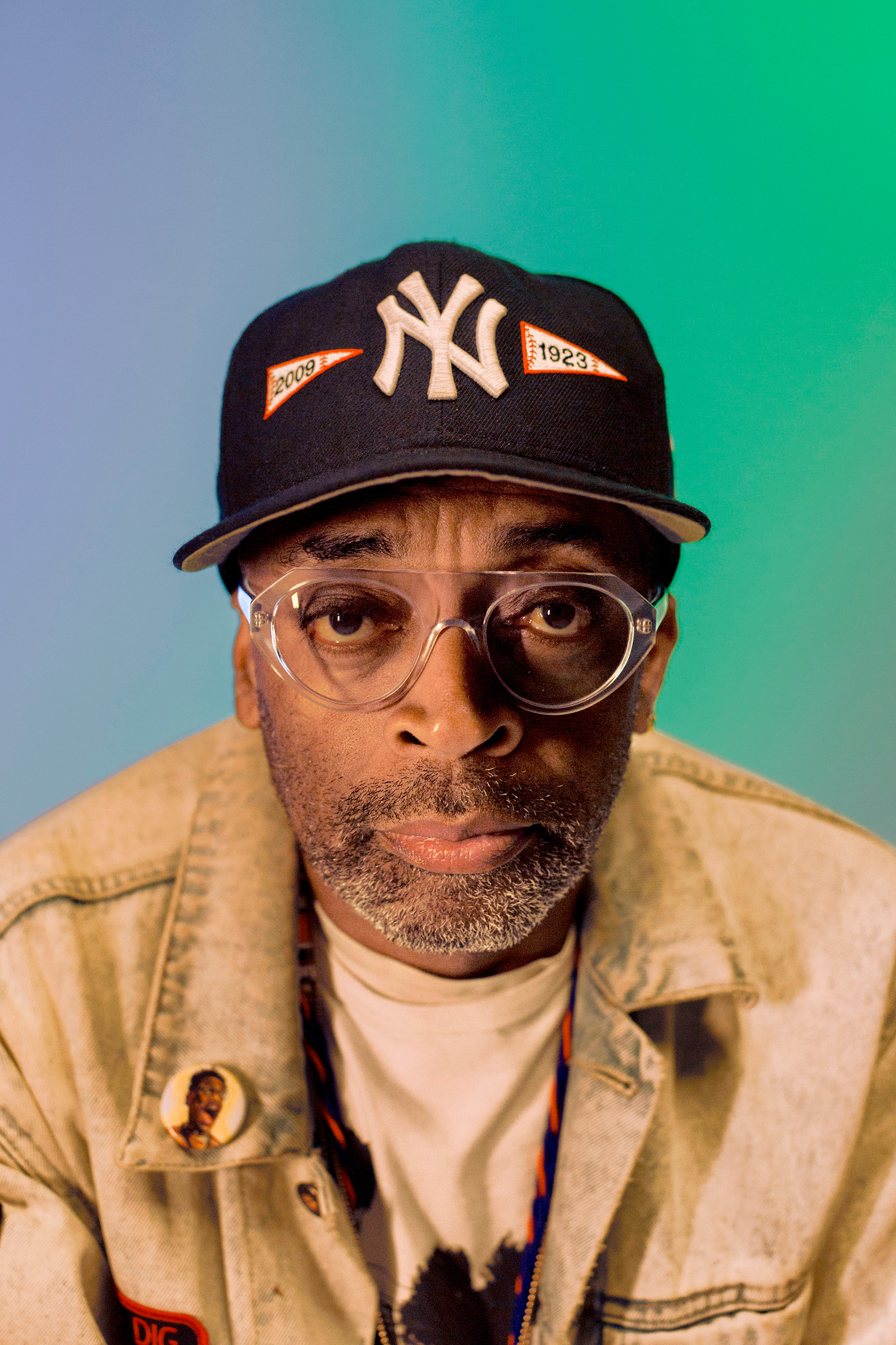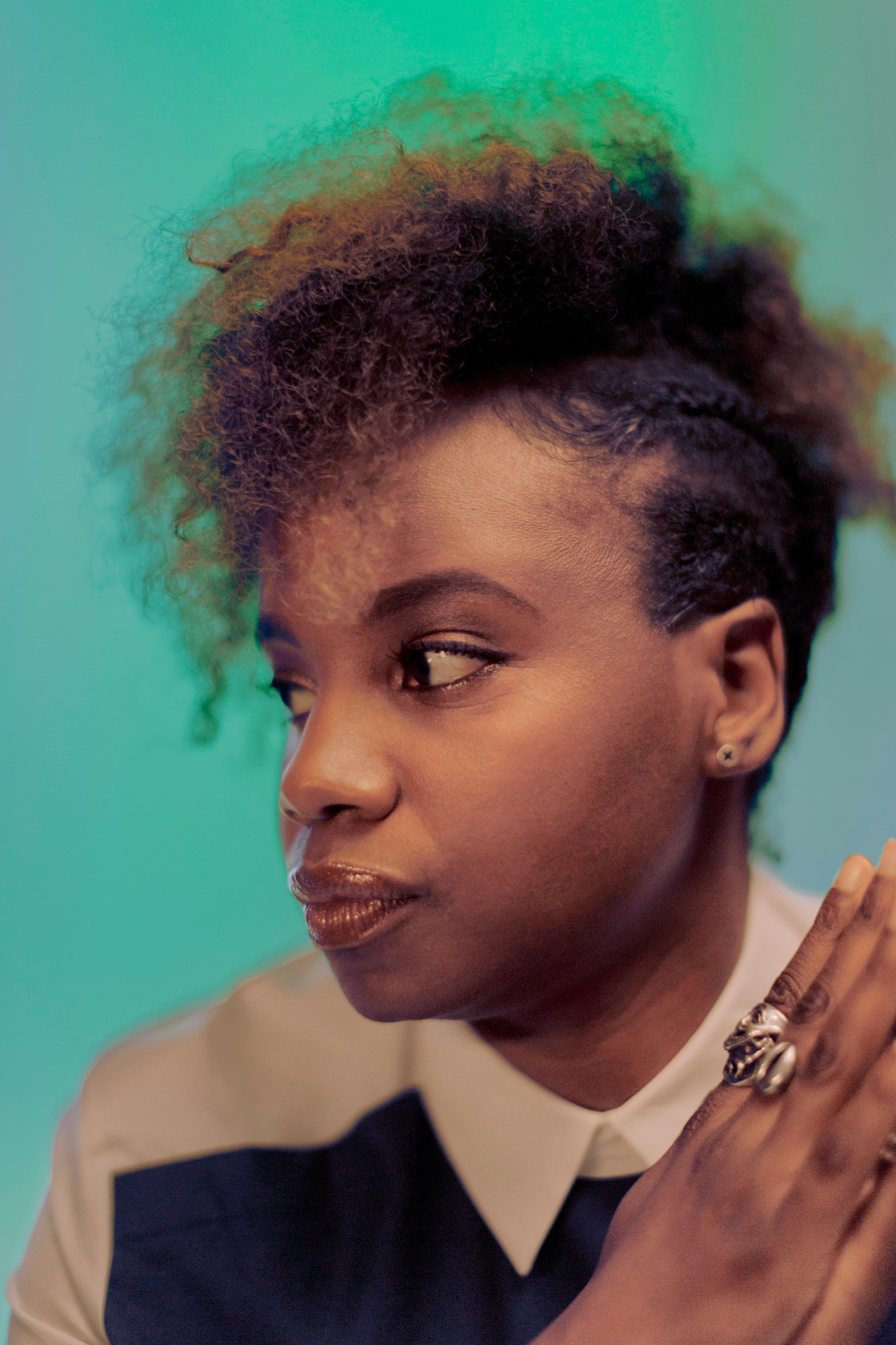
Spike Lee and Dee Rees first met at New York University’s Tisch School of the Arts in 2005, where he is artistic director and she was a film student. Since then, Rees has become one of the most promising new voices in film with her debut, coming-of-age tale Pariah (2011), and Bessie (2015), an Emmy-winning TV movie about musical genius Bessie Smith. Lee, meanwhile, continued into a third decade of his prolific career with films like When the Levees Broke (2006) and Chi-Raq (2015). Now, in a reunion of sorts, both filmmakers have new projects debuting on Netflix. Rees’ buzzy drama Mudbound (Nov. 17) is an epic tale about the intersecting lives of two families, one black and one white, living on the same slice of Mississippi farmland in the 1940s. Lee’s new series, She’s Gotta Have It (Nov. 23), is a fresh, episodic take on his groundbreaking 1986 film of the same name. On a warm September afternoon, the pair returned to the school where they met–and where Lee still teaches–to discuss their new projects, how they met and what they’ve learned from each other.
TIME: Do you remember when you first met each other?
Rees: Spike teaches master classes at NYU, and it was my second year. Everybody was scrambling to sign up for the class. He’ll take on a couple students to be interns, and he was shooting Inside Man. At the end of the internship training period, there was a test: connect the film with the famous black director. I think I failed. But I got in anyway.
Lee: She was a hard worker. That’s one of the things that comes to me first–talent levels, but also people who have a work ethic. We’ve always had internships. It’s a big thing when people who want to be filmmakers get to go on a big set to see how things run.
Rees: The biggest thing I learned was endurance. If you’ve never done a feature shoot, you don’t realize it’s day after day after day. Getting up at 4 in the morning twice in a row is one thing, but three days in a row–it’s hard.
Spike, you’ve been teaching at NYU for almost 25 years.
Lee: I love teaching. My parents are teachers, my grandparents. Family tradition. I know sometimes it can be an extra little something where students can learn from people actually doing what they’re trying to do.
Between Mudbound and Miracle at St. Anna, both of you have made films that take place during World War II, a genre that has historically been pretty whitewashed. Do you ever feel compelled to tell a story in part as a corrective to the narrative?
Lee: It would take more than one film to correct that. The lack of representation of people of color, it’s not just World War II but Vietnam, World War I, the Spanish-American War, Iraq.
Rees: I thought about my grandfathers, because both went to war, and when they came back, they didn’t get things they were promised. My maternal grandfather went to World War II. My paternal grandfather, who’s from Tennessee, went to Korea. The one from Tennessee ended up a janitor at the electric company, and the one who went to World War II got a job as a mail carrier. These black soldiers went, and there were no parades when they came back. It was like, “Get back on the back of the bus.”

Dee, what drew you Mudbound?
Rees: The chance to tell both sides of the story. I wanted to make sure that the black family had an equal weight and we could see this kind of parasitic symbiosis, where they’re all stuck in the mud. I wanted them to have an inner life and not just be there in service of the [white] family.
Spike, of all your movies, what made you want to revisit this one?
Lee: It was my wife’s idea. I said, “Sounds like a good idea!” When Tonya suggested it, there was nothing for me to deliberate.
Rees: I was struck by the fact that [the film] was black and white, and it was about this woman’s sexual liberation and how she was allowed to have this complicated life and not be judged. She’s choosing. She’s not chasing.
Lee: There was talk for a minute about making one episode black and white, but that was not a battle I was going to win. Also, this has to stand apart from what we shot in 1985, came out in 1986. The film was 86 minutes, so we had a lot more time in 10 episodes to explore who [the protagonist] Nola Darling is. In the film we just touch upon her being an artist. Now that’s a major part. She is the struggling artist in gentrified Fort Greene, Brooklyn, who has to work four or five jobs and do her art.
Gentrification was a big theme in the movie.
Lee: In 1985, I don’t remember hearing the word gentrification. My parents bought a brownstone in Fort Greene in 1968 for $40,000. Back then, realtors wouldn’t even use the name Fort Greene. They would say “Downtown vicinity.” It was black and Puerto Rican. And then these idiot real estate brokers come in trying to change names. South Bronx is now SoBro. They’re trying to change the name of Malcolm X Boulevard. It’s horrible.
Rees: And you saw it coming. There’s a scene in Do the Right Thing–the white guy’s jogging and he steps on the sneakers.
Lee: I wrote She’s Gotta Have It in ’85. I wrote Do the Right Thing in ’88. I saw it coming.
Rees: When I moved to New York, right after Sept. 11, I moved to Fort Greene. I lived at Clinton and Myrtle.
Lee: It was “Murder Avenue” back then. Not Myrtle, Murdah.
Rees: The building I was in was all white. I only got in because the people selling it were a black couple, and they said, “We want to see you get it,” so they let me make a lower down payment. That was the only reason I was able to go to film school.
Mudbound features a powerful scene involving the KKK, and this is 70 years ago. Here we are in 2017, and to many Americans, the Klan feels as visible as it’s been in a long time.
Rees: I grew up in 1980s Nashville, next to a Klan member. My dad would tell me, “So-and-so’s a Grand Dragon.” He was a cop, and that was the only thing we think made them leave us alone. They would have a Confederate flag as their curtain. Our next-door neighbor was a Klan member. I would play with their granddaughter. She could come to my house and play on my swing set, but I was never allowed to go to her house and play on her swing set. I was called “nigger.” Racism never disappeared for me. It’s not this surprising new thing. At Sundance, I overheard some guy saying, “The movie’s good. The Klan scene was over the top, though.” I think now, post-Charlottesville, he’ll say, “The Klan scene’s not over the top.”
Lee: Plus, with Agent Orange in office, he’s giving the green light to a lot of these motherf-ckers, the wink-wink, “Come on out now, it’s cool.” Trying to equate the alt-right Nazis and KKK with the other group. It’s not the same.
Rees: We voted him in. What does it say about us as a country? We voted for it. We went for it.
Lee: The people in my show live in the world today. They live in a world where the murderers of Eric Garner are still walking. Where Agent Orange has the motherf-cking nuclear code. That’s the world we live in. People are woke.
Are there new genres you’re eager to tackle?
Rees: I’m doing [a horror film] with Blumhouse Productions. I loved Get Out and Jordan Peele. My partner and I moved upstate because we couldn’t afford to buy in Brooklyn, so it’s going to be a little bit based on being the only black women in an all-white town.
Spike?
Lee: Musical.
Rees: You already did musical! School Daze. That was my favorite.
Lee: That ain’t full out. There were musical segments. I mean full out.
More Must-Reads From TIME
- The 100 Most Influential People of 2024
- The Revolution of Yulia Navalnaya
- 6 Compliments That Land Every Time
- What's the Deal With the Bitcoin Halving?
- If You're Dating Right Now , You're Brave: Column
- The AI That Could Heal a Divided Internet
- Fallout Is a Brilliant Model for the Future of Video Game Adaptations
- Want Weekly Recs on What to Watch, Read, and More? Sign Up for Worth Your Time
Write to Eliza Berman at eliza.berman@time.com